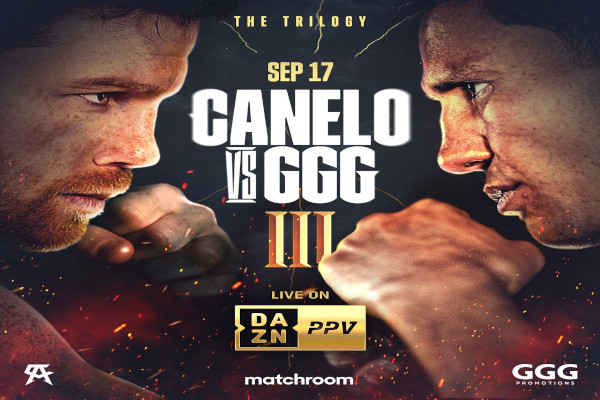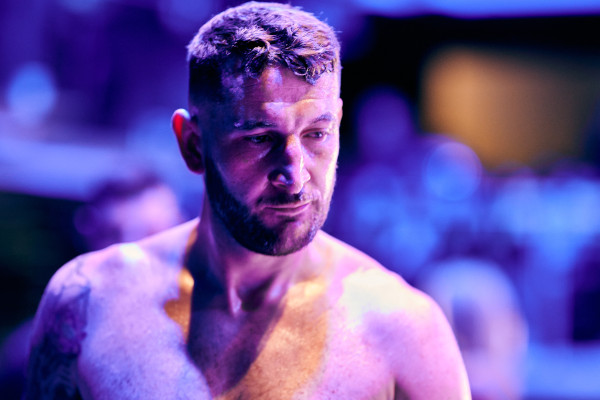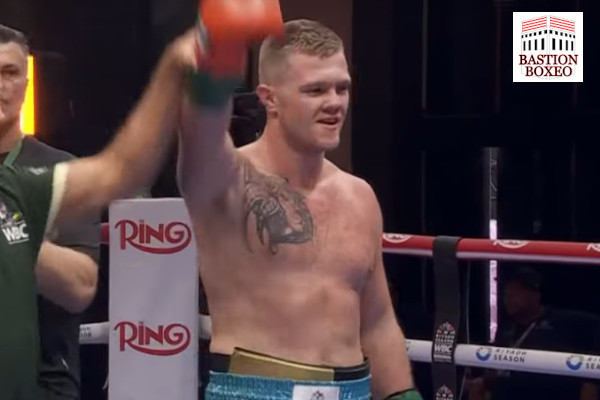Previa: Canelo busca rematar la jugada organizada por la cúpula de la industria derrotando a muy venido a menos Golovkin
Daniel Pi
@BastionBoxeo
En algún momento entre 2012 y 2014, el kazajo Gennadiy Golovkin 42(37KO)-1-1 alcanzó el pico de su rendimiento como profesional, siendo en este periodo y en los años siguientes cuando una generación entera de la cumbre del peso medio decidió evitarlo. Nombres como Felix Sturm, Sergio Martínez, Peter Quillin, Andy Lee, Darren Barker, Sam Soliman, Miguel Cotto, Saúl “Canelo” Álvarez y muchos otros rechazaron entonces enfrentarse a él, siendo algunos de los casos especialmente vergonzosos.
Sin embargo, como todo boxeador, el momento en el que Golovkin aplastaba con extrema facilidad a sus contrincantes y llenaba de excusas para no medirse a él las bocas de sus posibles rivales pasó, y en los combates ante Kell Brook (septiembre 2016) y Daniel Jacobs (marzo de 2017) quedó claro que ya no era la máquina imparable de años atrás y que había empezado a perder rendimiento. Entonces fue cuando Canelo decidió enfrentarse a él por primera vez, combate terminado en un empate extremadamente polémico y que, con una cartulina de 110-118 a favor del mexicano, dejó claro que había un interés evidente en la cúpula de la industria para que Golovkin no venciese.
Un año más tarde, y después de un positivo en control antidopaje de Canelo 57(39KO)-2-2 que tuvo una sanción absurdamente indulgente y corrupta, se llegó a la revancha. En ella de nuevo la gran mayoría vio ganar a Golovkin, pero no así los jueces, dejando aún más claro esto que, hiciese lo que hiciese, el púgil nacido en Karaganda no iba a lograr una decisión ante Álvarez.
Si se hubiese buscado la tercera pelea de forma inmediata, con el público harto por la actuación de los jueces, esto habría dado menos ingresos a los promotores, cadenas y demás implicados, por lo que era necesario enfriar el asunto un tiempo. La idea, por supuesto, fue abrazada al momento por Canelo, que al ser 8 años más joven y estar mejorando boxísticamente hasta entrar en su pico de rendimiento, tenía el tiempo de su lado. Por su parte Golovkin seguía perdiendo nivel (aunque algunos de sus fans no quisiesen admitirlo) y ante Derevyanchenko se vio en una durísima guerra de desgaste de doce asaltos que se cobró un precio físico permanente en ambos boxeadores.
Mientras tanto, y con Canelo entrando en su mejor racha con victorias notables (Plant y Saunders), triunfos ante rivales a medida (Fielding y Yildirim) y éxitos que parecieron extraños para muchos fans (Kovalev y Smith), DAZN aguardaba el mejor momento para cumplir su objetivo de emitir el tercer combate entre Álvarez y Golovkin. Este finalmente llegó cuando Bivol dominó a Canelo, resultado que, lejos de ser un obstáculo, fue una bendición para DAZN y Matchroom Boxing: el tropiezo se pudo aprovechar para vender que Álvarez había bajado un peldaño en su rendimiento y que el duelo ante un Golovkin en las últimas estaba abierto y tenía interés boxístico.
No obstante, y se diga lo que se diga, es muy cuestionable que no se sepa quién va a ganar la pugna o que Golovkin pueda lograr lo que no consiguió hace cinco años, cuando estaba en un estado de forma muy superior al actual.
De hecho, en su último combate ante un Ryota Murata que fue ampliamente vencido por Rob Brant, Golovkin padeció quizás los peores rounds de su carrera, en los que cansado y lento fue golpeado con sencillez por el agresivo japonés, ante el que tuvo que tirar de su coraje, pegada y experiencia para lograr una remontada épica que no pudo ocultar que el retiro del kazajo está a la vuelta de la esquina.
Por otro lado, aunque Canelo fue vencido en su último combate, este tropiezo se produjo subiendo de categoría y midiéndose a Dmitry Bivol, un boxeador habilidosísimo y que por su agilidad, selección de golpes y juego de piernas posee un estilo completamente diferente al de Golovkin, más aún en este momento de su carrera.
En definitiva, un Golovkin en el punto más bajo en la línea descendente de su rendimiento, que por primera vez en su carrera disputará un combate en el techo del peso supermedio y que tuvo todo en su contra en los precedentes choques ante este mismo rival, se enfrenta a un Canelo deseoso de desquitarse de su último resultado, que pelea en la división en la que mejores resultados ha logrado y que, gracias a su combinación de encaje, defensa y destreza encontrando huecos, debería tener facilidades ante la actual versión estática y lenta de “GGG”.
Todo apunta a que ahora, cerca de una década después del momento en el cual el choque debería haberse producido por primera vez, Canelo tiene la oportunidad de oro que él y la cúpula de la industria han estado esperando. O sea el momento de anotarse una victoria por detención con la que, como ha sucedido en otros casos, intentar hacer olvidar a la gente lo sucedido en los veredictos de los combates anteriores.
Si Golovkin, pese a estar desgastado, castigado y semiroto, consiguiese encontrar el puño que no ha encontrado en 24 asaltos ante el mexicano y lograse anotarse la victoria, esto debería cambiar para siempre las valoraciones que de él se hacen: si con todo en su contra es capaz de noquear a un top 10 libra por libra con un encaje férreo y se corona campeón indiscutido del peso supermedio podría llegar a alcanzar una posición por encima del miembro del Salón de la Fama medio, algo que no es cualquier cosa.
Con todo, aunque lo que entusiasma del boxeo es precisamente su capacidad para generar sorpresas y crear momentos espectaculares cuando nadie los espera, la mayoría de las veces el resultado es el esperado y el deseado por quienes mueven los hilos en los despachos. Así que nadie se debería extrañar si, en el caso de que Golovkin mostrase un boxeo como ante Murata, Canelo le golpea arriba y abajo con sus ganchos, impone su jab y, si no consigue noquearle, al menos logra una victoria por decisión sin controversia que cierra una trilogía que resume en sí los elementos menos agradables del pugilismo profesional.
Este evento será emitido por DAZN el sábado desde las 20:00 ET/17:00 PT, las 2:00 de la madrugada del sábado al domingo en hora peninsular española.

Preview: Canelo seeks to finish off the plan organized by the elite of the boxing industry by defeating the very faded Golovkin
Daniel Pi
@BastionBoxing
At some point between 2012 and 2014, the Kazakh Gennadiy Golovkin 42(37KO)-1-1 reached his peak as a professional, being in this period and in the following years when an entire generation of top middleweights decided to avoid him. Names like Felix Sturm, Sergio Martínez, Peter Quillin, Andy Lee, Darren Barker, Sam Soliman, Miguel Cotto, Saúl “Canelo” Álvarez and many others refused to face him, some of the cases being especially embarrassing.
However, like every boxer, the moment in which Golovkin crushed his opponents with extreme ease and filled his possible rivals with excuses for not fighting him eventually ended, and in the fights against Kell Brook (September 2016) and Daniel Jacobs (March 2017) it became clear that he was no longer the unstoppable machine of years ago and that he had started to lose performance. That was when Canelo decided to face him for the first time, fight that ended in an extremely controversial draw and that, with a 110-118 card in favor of the Mexican, made it clear that there was an evident interest in the elite of the industry to prevent Golovkin from winning.
A year later, and after positive PED tests by Canelo 57(39KO)-2-2 that had an absurdly indulgent and corrupt “punishment”, the rematch took place. In it, again, the vast majority saw Golovkin win, but not the judges, making it even clearer that, whatever he did, the Karaganda-born boxer was not going to achieve a decision victory against Álvarez.
If the third fight had happened immediately, with the public fed up with the verdicts from the judges, this would have given less income to the promoters, networks and others organizers involved, so it was necessary to cool the matter down for a while. The idea, of course, was embraced immediately by Canelo, who being 8 years younger and with his boxing improving until entering his peak, had time on his side. For his part, Golovkin continued to lose level (although some of his fans did not want to admit it), and against Derevyanchenko he had a very tough twelve-round war of attrition that took a permanent physical toll on both boxers.
Meanwhile, and with Canelo in the best streak of his career with notable victories (Plant and Saunders), wins in mismatches (Fielding and Yildirim) and successes that looked strange to many fans (Kovalev and Smith), DAZN was waiting for the best moment to fulfill its goal of broadcasting the third fight between Álvarez and Golovkin. This finally came when Bivol dominated Canelo, a result that, far from being an obstacle, was a blessing for DAZN and Matchroom Boxing: the setback has been used to sell that Álvarez has dropped a step in his performance and that the duel against Golovkin (who really is in the last stretch of his career) is even and has a lot of boxing interest.
However, whatever is said, it is highly questionable that it is not known who is going to win the fight or that Golovkin can achieve what he did not achieve five years ago, when he was in a much better shape.
On the contrary, in his last fight against Ryota Murata (who was widely defeated by Rob Brant), Golovkin had perhaps the worst rounds of his career, in which tired and slow he was easily beaten by the aggressive Japanese, against whom he had to use all of his courage, punch and experience to materialize an epic comeback that cannot hide the fact that his retirement is just around the corner.
On the other hand, although Canelo was defeated in his last fight, this lose happened by moving up in weight and facing Dmitry Bivol, a highly skilled boxer who, due to his agility, selection of punches and footwork, has a completely different style than Golovkin, even more so at this point in his career.
In short, Golovkin, at the lowest point in his decline, faces for the first time in his career a fight at the super middleweight limit battling an opponent who has been blatantly favored in their two previous clashes. For his part, Canelo, eager to win after his last defeat, fights in the division in which he has achieved his best successes against a static and slow version of “GGG”, against whom he have obvious advantages due his combination of chin, defense and skill finding breaches.
Everything points to the fact that now, nearly a decade after the moment in which the bout should have first happened, Canelo has the perfect opportunity that he and the elite of the boxing industry have been waiting for. That is, the moment to score a stoppage victory with which, as has happened in other cases, try to make people forget what occurred in the verdicts of the previous fights.
If Golovkin, despite being worn out, punished and half-broken, manages to find the punch that he has not found in 24 rounds against the Mexican, and manages to score victory, this should forever change how he is viewed in a historical perspective: if with everything against him he is capable of knocking out a top 10 pound for pound boxer with an iron chin and conquer the undisputed super middleweight crown, he could rise to a position above the average Hall of Famer, which is no mean feat.
However, although what excites about boxing is precisely its ability to generate upsets and create spectacular moments when no one expects them, most of the times the final result is what is expected and desired by those who pull the strings in the offices. So no one should be surprised if, in the event that Golovkin shows a boxing like against Murata, Canelo hits him up and down with his hooks, imposes his jab and, if he doesn’t get a knockout, at least obtains an uncontroversial decision win that closes a trilogy that summarizes in itself the less beautiful elements of professional boxing.
This event will be broadcast on DAZN on Saturday from 8:00 p.m. ET/5:00 p.m. PT, 1:00 a.m. in the United Kingdom.









